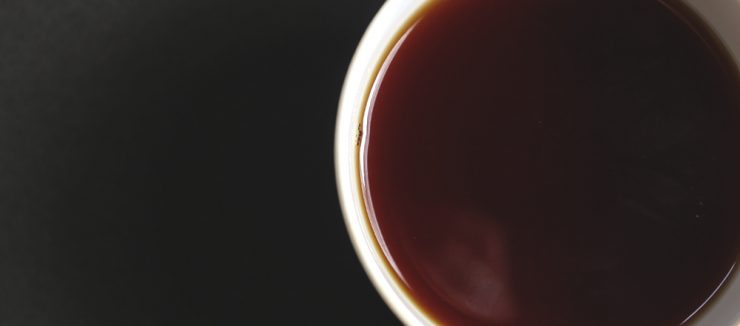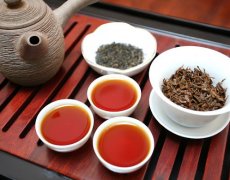Which country is the country of black tea? What is the efficacy and function of Kenyan black tea?
Hujambo! In Swahili, you will hear Kenyans speak in a warm and soft way. Kenya is the 27th most populous country in the world, has some of the most hospitable people you have ever met, and is the fourth largest tea producer after China, Sri Lanka and India.
Tea is very important in this country. As the largest source of foreign exchange earnings for the Kenyan economy, most Kenyan tea is grown in the highlands of the western Rift Valley at elevations of between 1500 and 2700 meters, or between 5000 and 8800 feet. There, tea grows vigorously in the cool air, peaking during the dry season in February.
The Origin of Kenyan Tea
Kenyans have been growing tea since the beginning of the 20th century, when the British established the first tea garden in a Kenyan colony. In the 1920s, the British began to produce tea in Africa. By the 1950s, after South Asia gained independence from Britain, Kenya provided most of the tea to Britain. Today, this equatorial African country still provides more than 40% of Britain's black tea.

The challenge of quality control
More than 60 per cent of Kenya's tea is grown by nearly 500000 small farmers, unlike concentrated tea gardens in India and Sri Lanka and small gardens in China and Japan. Such a large number makes quality control an almost insurmountable challenge. Most of the tea is made into CTC (cut, tear, roll) particles, added to the mixture and packed in tea bags. These blended teas are hardly sold as Kenyan teas. In this country, only a small portion of pure orthodox tea can be drunk alone. Traditional tea production uses only the highest quality leaves and buds to produce a strong, strong flavor, resulting in higher quality and better taste than CTC tea.

Pure Kenyan tea
The purest Kenyan tea is recognized in markets around the world because it has been shown to contain higher levels of antioxidants than tea produced in other parts of the world. Although most Kenyan tea is sold in the form of mixed tea, a small group of Kenyan tea merchants have begun to try authentic pure tea, both white and black. The best we have found so far is the Kenyan Milima from the Kenyan Highlands, with charming orange and spice flavors.
Milima in Swahili means "on high ground". The tea tree that produces the tea grows in the Kenyan highlands more than 6000 feet above sea level. The leaves give off a lovely smell in the cool air and rocky soil. Milima is a pure black tea made from three gardens of James Finley Tea Company in the UK. Tea is taken to Marinyn Manor, where it is withered, rolled between two plates in an Orthodox way, oxidized and dried, all of which is the traditional way of English tea. The quality varies from year to year; at its peak, Milima offers fascinating citrus and spice aromas and flavors.
Important Notice :
前街咖啡 FrontStreet Coffee has moved to new addredd:
FrontStreet Coffee Address: 315,Donghua East Road,GuangZhou
Tel:020 38364473
- Prev

The most complete and most beautiful Starbucks recommend Starbucks stores in Taiwan look good? where are the pink Starbucks stores?
Starbucks is building new stores again. What shape is it this time? Here comes the "driveway" store! It looks like this this time Starbucks "driveway" store opened in Hsinchu, Taiwan, the store is located in the eastern part of Hsinchu business district (detailed address: 300047 Hsinchu City East District Puding second Road 71), the store is now open to the public. According to reports, the new store is in the space.
- Next

Can pregnant women drink tea? What kind of tea would you like? What kind of scented tea can you drink the ten kinds of tea that pregnant women can't drink?
Is it safe to drink tea during pregnancy? From avid tea drinkers to occasional tea drinkers, many women find themselves asking whether it is safe to drink tea during pregnancy because of the caffeine content in the tea. In short, the answer is yes, but in moderation. This article discusses what research has been done on this topic and what organizations of medical professionals have proposed on this topic.
Related
- The milk tea cup becomes smaller?! Overlord Tea Girl launches a new "Return to Yunnan" series
- Accused of selling counterfeit and high-priced coffee beans! Well-known boutique coffee brand "Oukelao" bowed and apologized!
- How to make espresso dumplings? Can I eat coffee and glutinous rice balls together?
- Save the unformed and stagnant powder cakes in one second! What is the problem with stagnant water in the powder bowl of the espresso machine?
- What does hand-brewed coffee stop mean? Why is it not recommended to make coffee by hand?
- Is it normal to smell like coffee? Why does coffee smell like alcohol? What's wrong with the strong smell of cold extract ice dripping ice brewed coffee?
- How to solve the problem that hand-brewed coffee extraction takes too long? Why is the water flowing so slowly when making coffee?
- The main points of making Australian white coffee, the proportion details, how does Australian white properly foam and blend the flowers?
- Can ice water make cold extract coffee? What is the difference between room temperature water and ice water for making cold coffee?
- What milk is best for making latte and white Dirty coffee? What is the difference between different brands of fresh milk and pure milk for making coffee?

